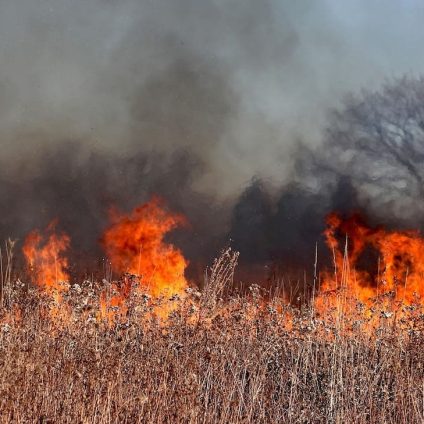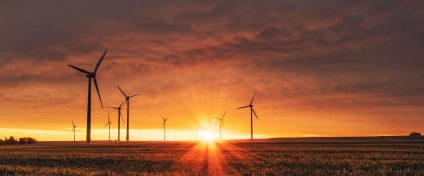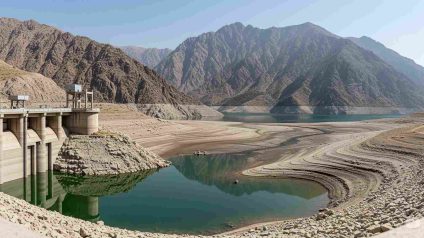The monitoring of forest fire emissions during the first four months of 2025, conducted by Copernicus, revealed record wildfire activity in the United Kingdom and South Korea, alongside below-average fire activity in Southeast Asia.
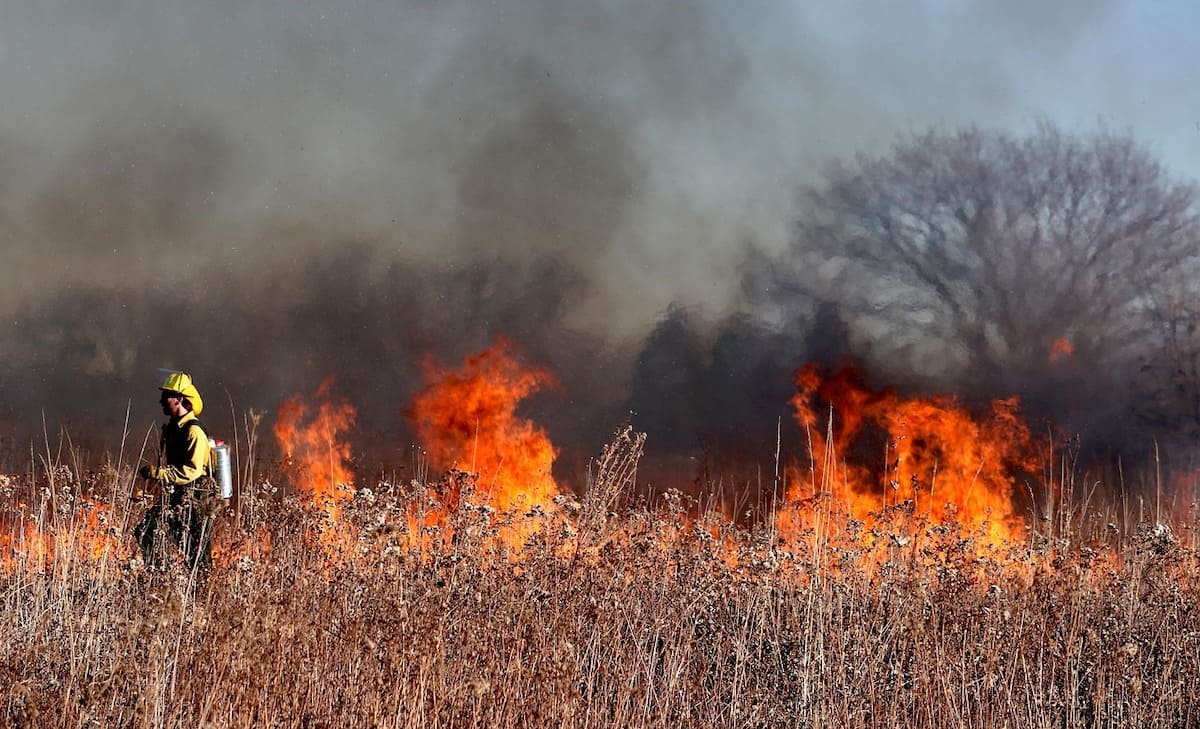
by Erminia Voccia
Emissions from forest fires lower than average in Southeast Asia
Countries in northern ASEAN—Myanmar, Thailand, Laos, Cambodia, and Vietnam—recorded some of the lowest seasonal forest fire emissions since CAMS began collecting data in 2003 through the Global Fire Assimilation System (GFAS). Still, during March and April, wildfires were particularly intense in Thailand, Laos, and Vietnam, with a significant impact on air quality across the region.
The overall positive trend is largely attributed to efforts aimed at reducing transboundary pollution from forest fires, a longstanding public health issue linked to traditional slash-and-burn agriculture. This method involves cutting and burning vegetation to clear land for new crops. Estimated total carbon emissions in northern ASEAN for the first four months of 2025 reached 37 megatonnes, a substantial decrease from the 2003–2024 seasonal average of 79 megatonnes.
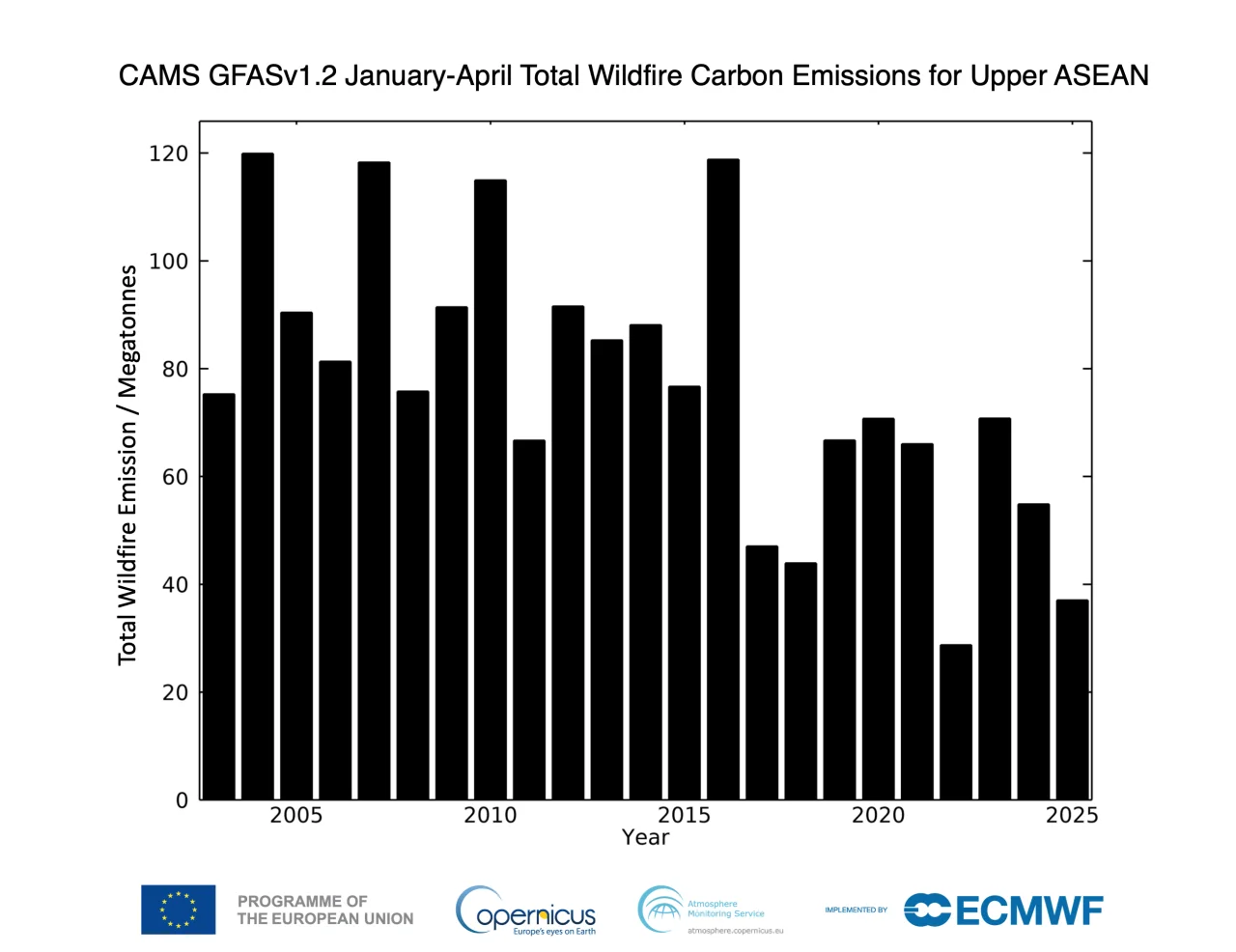
While the decline in emissions is encouraging, CAMS scientists caution that more work is needed to address long-range smoke transport. Economic challenges and uneven monitoring capabilities make it difficult to fully mitigate the cross-border impacts of biomass burning.
CAMS data is key to tracking cross-border wildfire pollution, factoring in smoke transport and related air pollutants. Fire activity was especially intense in Laos, Myanmar, and parts of eastern India. As early as January, emissions were already affecting air quality in northern India, including areas of the Himalayas and Nepal.
South Korea faces deadly wildfire surge
In March, southern regions of the Korean peninsula were hit by a devastating wave of wildfires. Over the course of just one week, the fires killed 32 people, destroyed 5,000 buildings, and burned 104,000 hectares of land. These wildfires generated a record-breaking 0.8 megatonnes of carbon emissions, making 2025 the highest year on record for South Korea according to GFAS data. While spring wildfires are not unusual in the country, this year’s hot, dry, and windy conditions intensified the crisis.
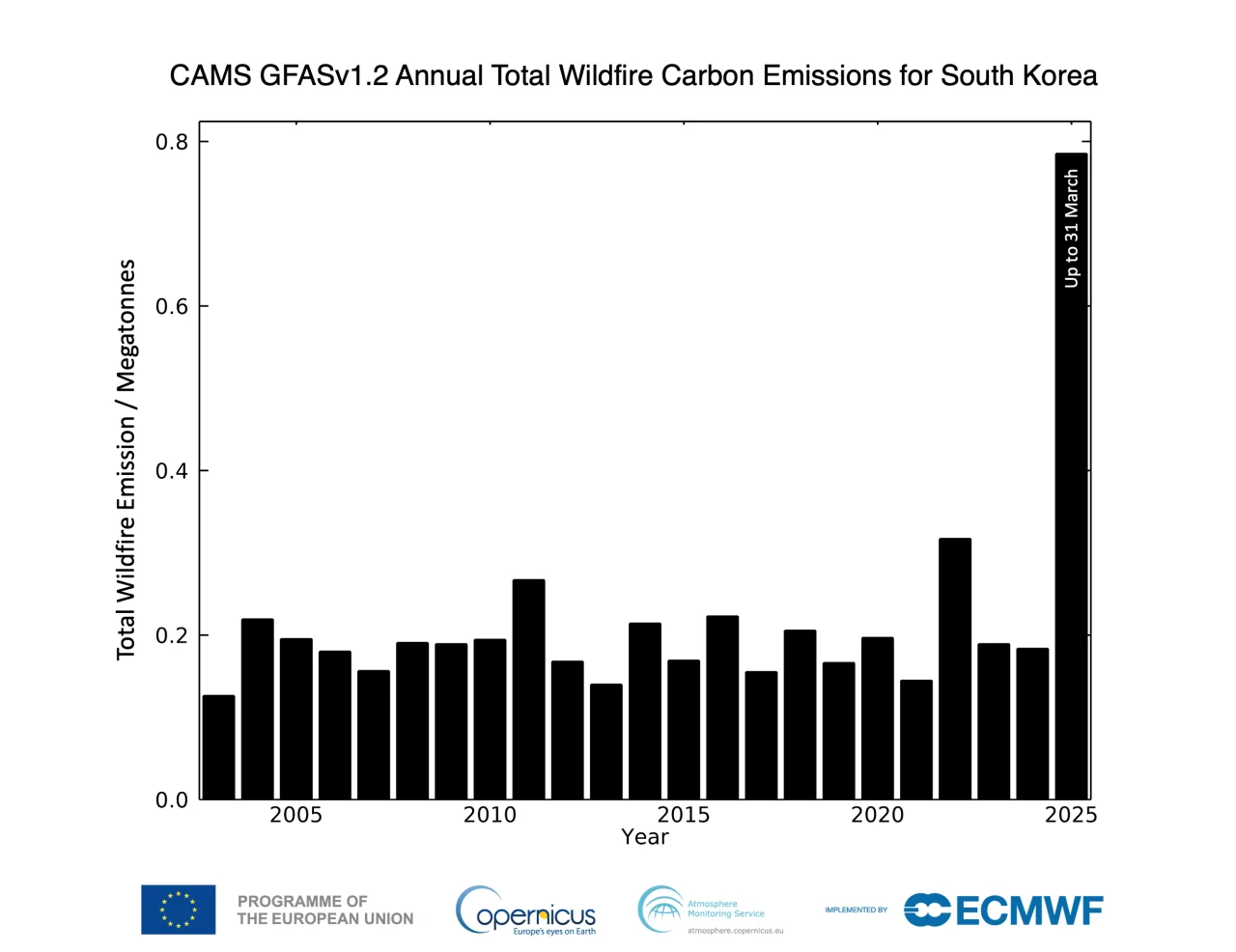
Unusual fires hit northwestern Europe
As the Northern Hemisphere approaches summer, wildfire activity has already increased in several European countries. Prolonged dry spells and above-average temperatures created ideal conditions for early-season fires in the UK, Ireland, and Germany. The Netherlands recorded its highest April emissions from wildfires in 2025, while the UK and Ireland reported their second-highest carbon emissions for the January–April period since 2003.
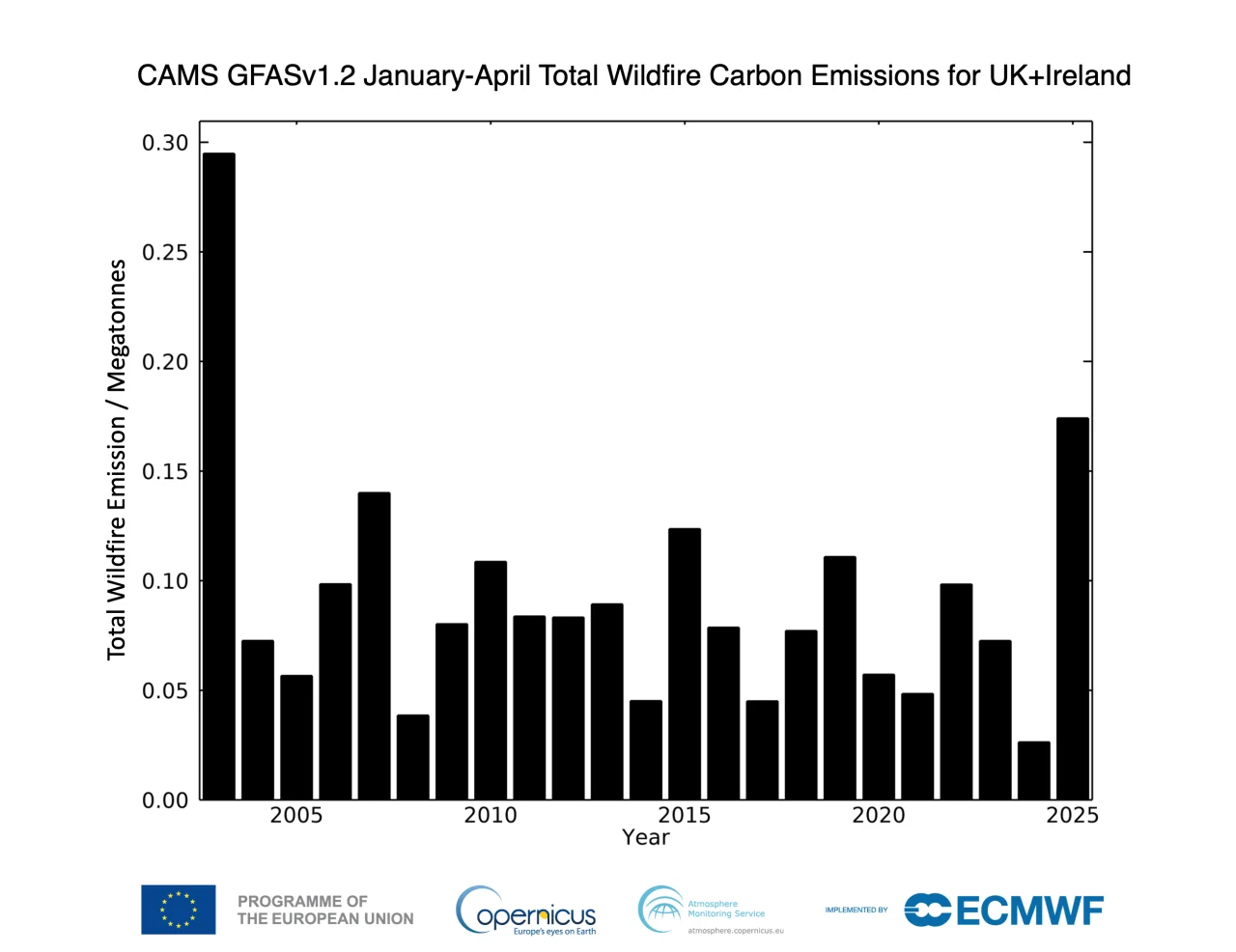
The global health risk of biomass burning
“Wildfires and biomass burning have a major impact on air quality and human health,” said Mark Parrington, Senior Scientist at CAMS. “We monitor forest fire emissions and smoke transport in near real time to assess potential effects on air quality. This becomes especially important during peak fire seasons worldwide, when smoke can affect the air people breathe across vast regions.”


